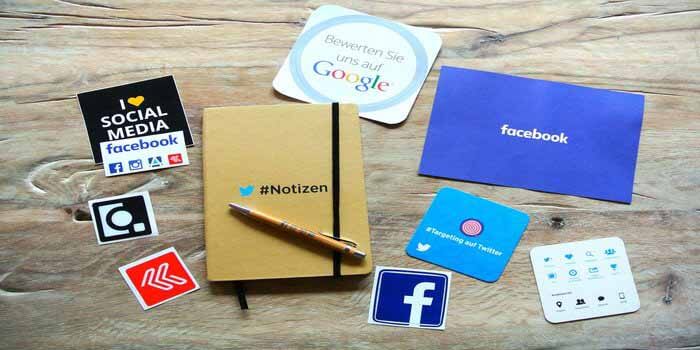When you hear the word art, what comes to mind? Leonardo Da Vinci? Picasso? Dali? The great artists of every era have left their mark on society. But for most of history, the public was a passive observer of art. Gallery curators would go through artists’ portfolios and decide if they were worth exhibiting. Then came the Internet Age. Suddenly, everything changed. In a world of Cox internet packages, data plans, and connected devices, art in the traditional sense changed. Not just art, but the entire process of creating, exhibiting, distributing, and even selling art changed. This piece takes a look at what the future holds for media and the arts.
The Future of Art and Media in a Technologically Evolving World
Artists have always made use of the technology of their time in their art. The Impressionists gave us beautiful outdoor scenes because they could paint with more advanced paints. Technology and art may seem to be very distinct fields, but have a connection with each other.
When the properties of light became a novelty in early science, the thereat was one of the first applications. But when it comes to the future, it’s anyone’s guess. Art, by its very essence, does not conform to boring rules and probabilities. The future of art is neither predictable nor describable. But we will still take a look at modern technology influencing art in:
- The Web Delivers
- “Good” and “Bad” Art
- New Directions
Let’s have a look at these points of interest.
The Web Delivers
The power of the internet is awesome. Social media, search engines, and streaming services deliver thousands of GBs of content to users every day.Don’t wait, avail Cox Phone Service right now.It was only a matter of time when artists embraced the connectedness of the web. Traditionally, artists had to go through channels to be able to get exposure or even earn. Gallery owners and curators decided if artists had what it took.
Now the internet connects artists to the public directly. Nobody needs to go the gallery route for fame and fortune. Artists and creators publish art as posts, images, videos etc. every day. And they even sell their art on the internet, which is just one huge market of buyers. On the other side of the picture is the public. From being a passive observer, it has gone to a vocal one. People have platforms to voice their opinions and influence others. Art has more critics now than it ever did before.
“Good” and “Bad” Art
This is the flipside of connectivity. New technologies like software, lasers, and 3D printers are avenues for artists to explore. Maybe even use as canvases to create expression and art in a visual context. But since they are available to everyone, there is just as much “bad” art out there as “good” art. The thing about art is, just because it’s popular doesn’t mean it’s great.
And just because it’s great doesn’t mean it becomes popular. So many new ways to create art may cause us to lose our sense of what good art is. This is an emerging challenge for artists. On one hand, they have to be open to new technologies for new ways to express. On the other hand, they need to stay true to imagination and creativity. Finding the balance between the two will be a challenge, artists may have to face in the future.
New Directions
It’s not all bleak news though. Media artists who focus on new technologies are doing interesting things. Many are experimenting and pushing the fluid boundaries of art. For them, it’s a mix of the tools of today and the art of the past. Technology is opening up interesting new platforms for artists to express their art. Ultimately, art delivers an experience to the observer. With modern and emerging technology, art can offer more immersive experiences than ever. The boundaries of art in the future seem to be limitless.
As long as artists remember that they have to push forward, invent, and explore, art will continue to flourish. There may even come a time when I could order art on-demand from cable TV providers in my area. Augmented reality and virtual reality may come to redefine how we experience art. It’s all up to the artists and how they use technology to excel at expression. Only time will tell.
The difference between the terms “multimedia” and “multimedia art”
Nowadays, confusion still happens with terminology. Artistic practices based on multi-layered experiments can be defined as “multimedia” and “ multimedia art” . The first term refers to the already familiar practice of the visual art of the 1960s and 1990s, associated with the inclusion of more than one type of art in the structure of the work.
Multimedia art is synonymous with the more common in Western European countries the term “digital art” or “the art of new media”. In its manifestation, multimedia art is more harmonious than its predecessors: forced updates yield to a natural reaction to technological progress. And here it was not without paradoxes: in the modern world, a big city, where information is abundant, and there is a shortage of standing, the average resident is eager to look at multimedia. So it happened a series of popular multimedia exhibitions “Revived canvases“ , representing the work of great artists around the world through digital projections.
“Our exhibitions are relevant because in one time and in one place you can see all the works of Van Gogh or the most significant paintings of the Impressionists. While the originals are in different museums of the world or private collections, we have them all presented together, in an enlarged size and accompanied by wonderful music, ”commented the success of the expositions Kyra Marinina, PR director of iVision – the organizer of the exhibitions“ French Impressionists ” in Russia .
On the wave of the popularization of art there are also opponents of multimedia shows, who do not see educational activities, they say, “they will see and forget”. However, it is difficult to call the “surrogate for art” of multimedia art, now it’s rather an undecided youth, or it’s a tool for expressing the artist’s thoughts, or a new direction, the prospects of which depend on technological progress and adventurous creator.
“It is impossible to consider multimedia display and classical museum exposition of painting interchangeable for many reasons. There is an internal art convention according to which the author of the work (and later the museum exhibiting the work) defined the content, format and mode of display, and this is not subject to any changes. In addition, it is technically impossible, since at the given stage no method of representative display is capable of transmitting the entire nuance of the color layer and the texture of the stroke. The multimedia show works rather with the content of the work, it relies on the plot of the picture and helps the viewer to turn on the imagination and see nuances that are not obvious at first glance.
Of course, while multimedia exhibitions remain a fashionable trend, but in the future they will have to develop and, possibly, form as a separate direction in art. In the exhibition “The Great Modernists. The insurrectionin art “is an investigational attempt to go beyond the illustration of painting by animating no longer the paintings themselves, but creating a separate graphic environment into which these paintings are integrated, but so far only a few of these clips.
For example, in order to “revive” the plane compositions of Malevich and Kandinsky, our designers identified the main patterns in the paintings of each of the artists and created 3D worlds based on them, within which the viewer can move. That is, it is no longer just a slide show with music, but a real journey into the universe of Kandinsky and Malevich.




